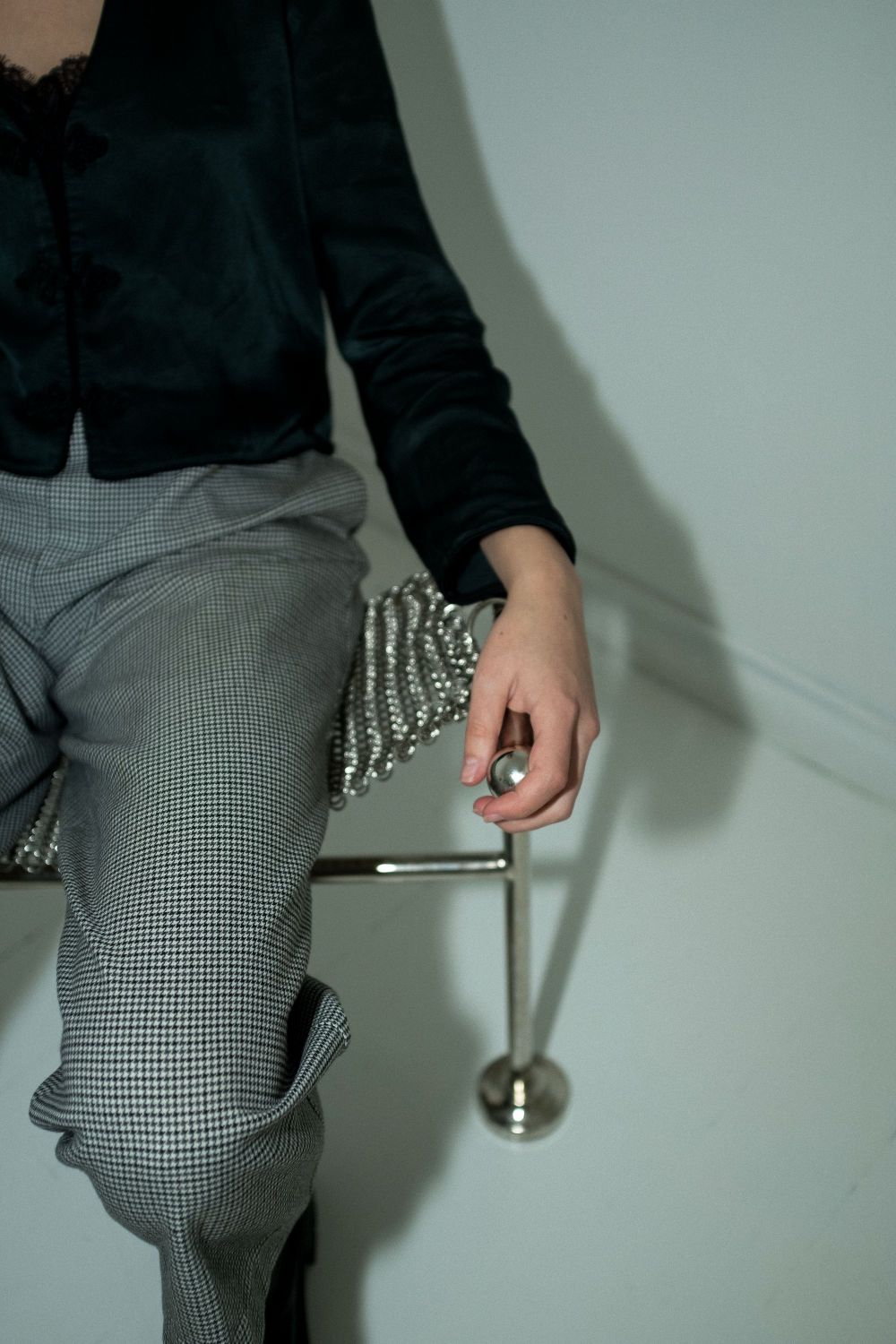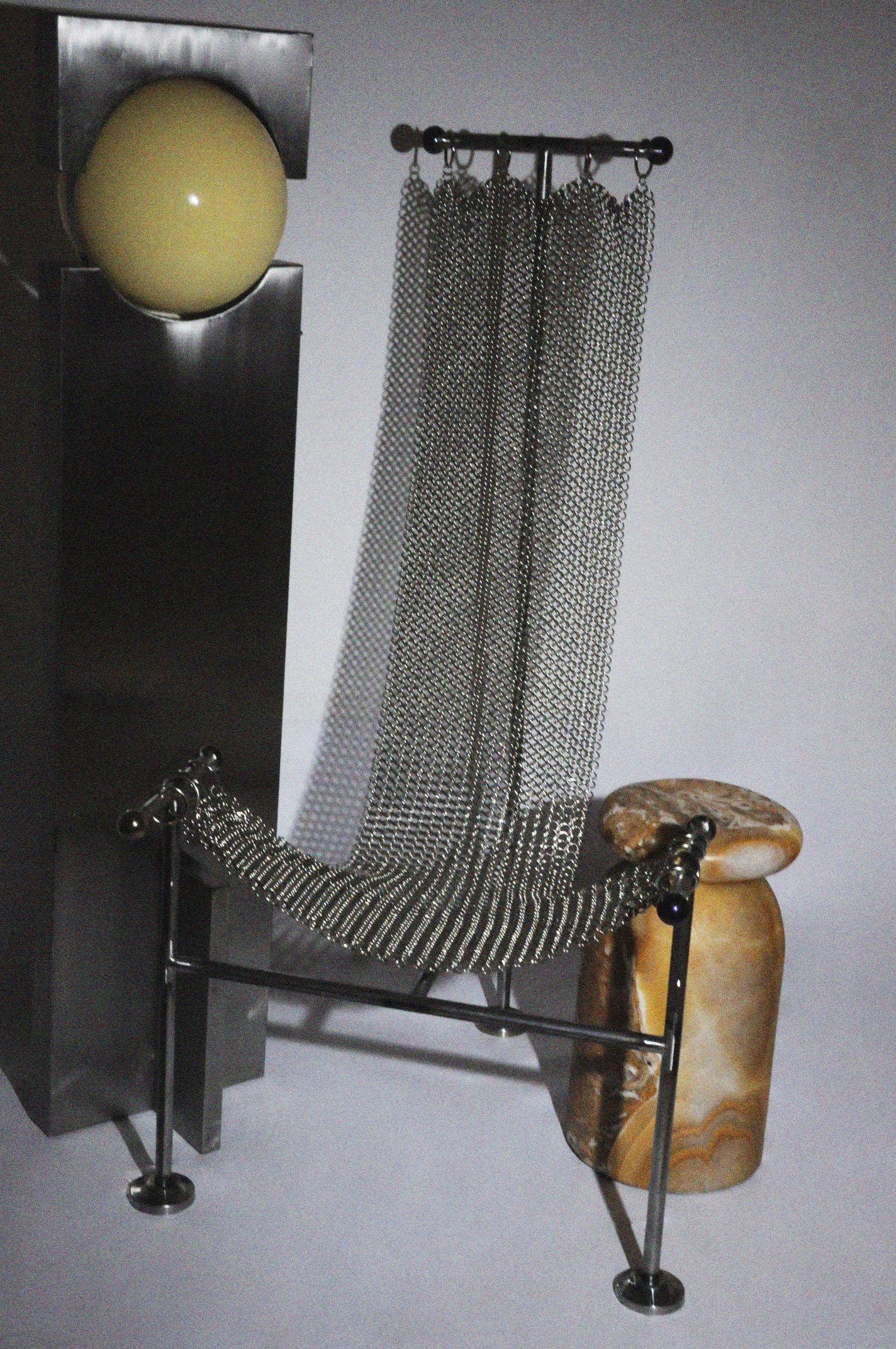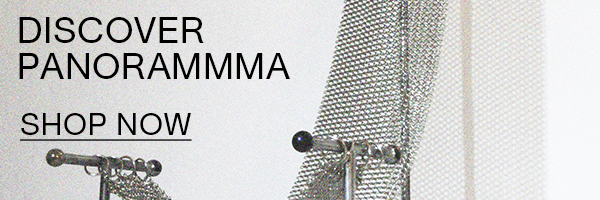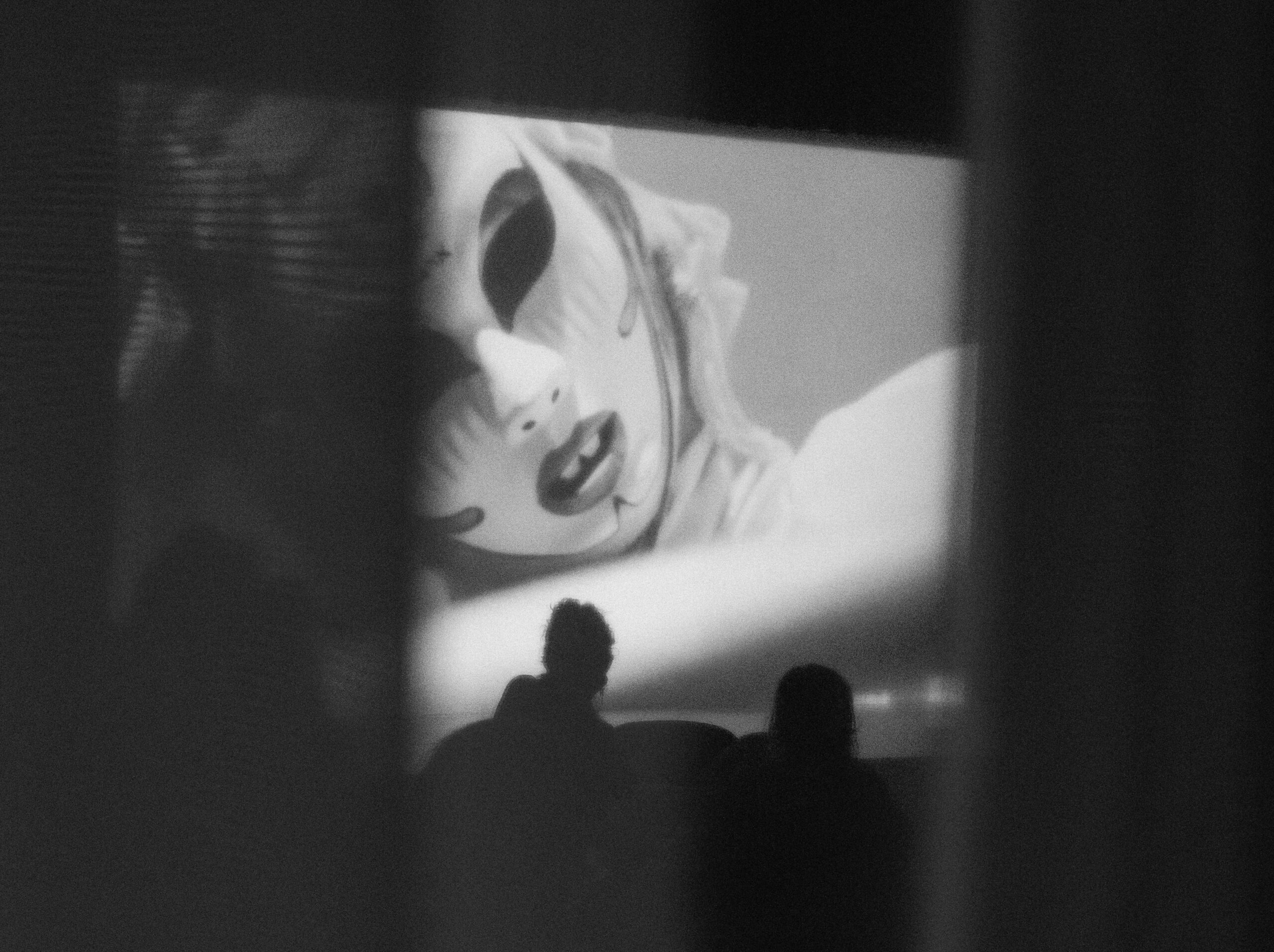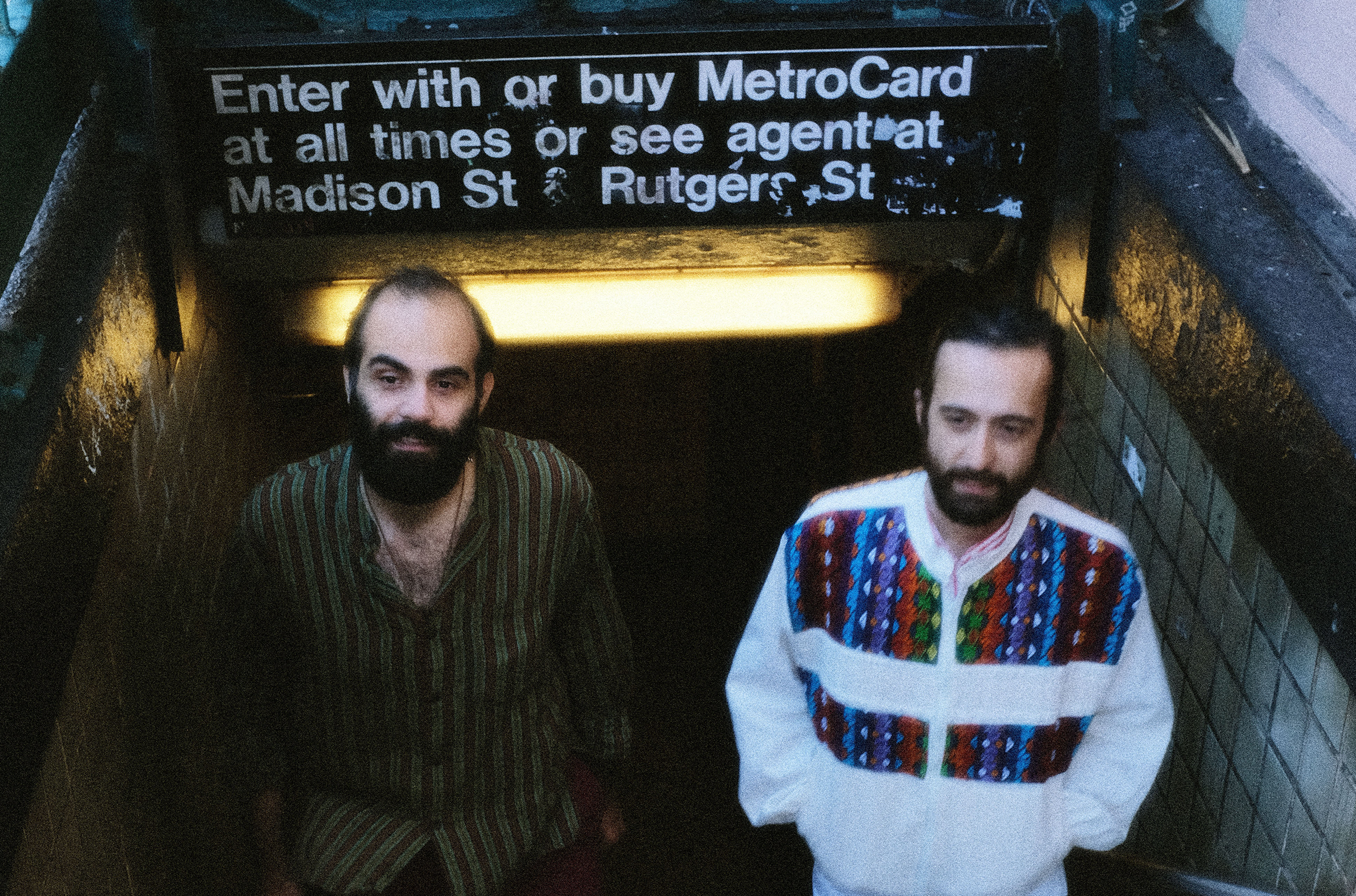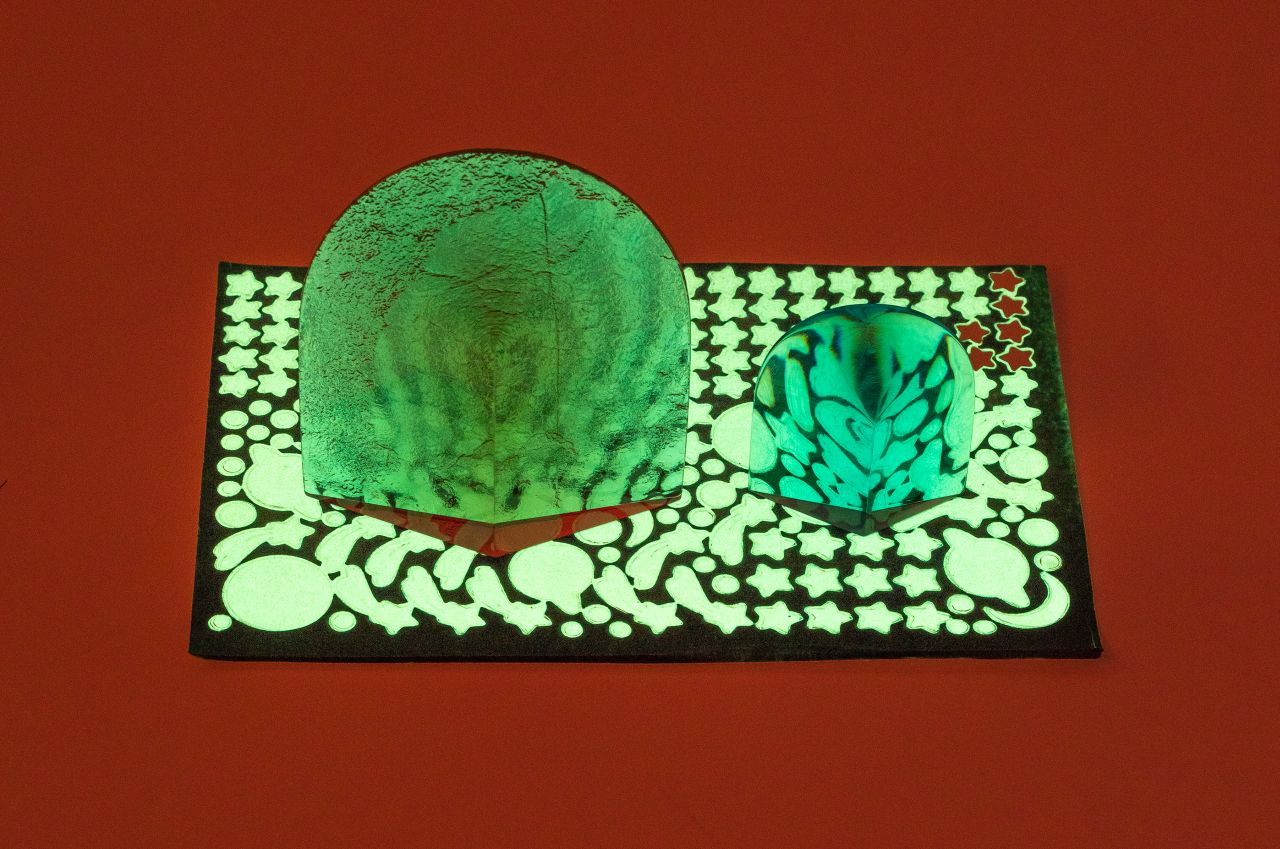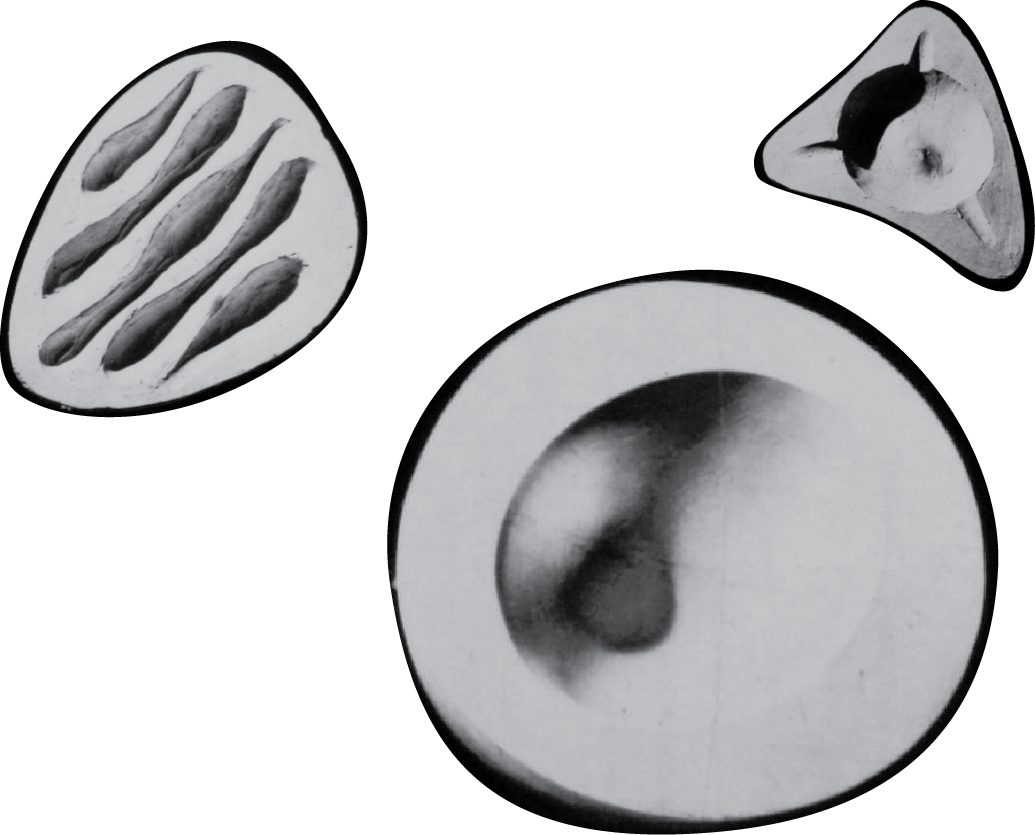PANORAMMMA, NEW FURNITURE ATELIER REDEFINING OUR RELATIONSHIP WITH FUNCTIONAL OBJECTS
Product photography courtesy of PANORAMMMA.
Shop the PANORAMMMA Chainmail Chair
Maika Palazuelos is an artist and designer from the northern city of Monterrey, México—born and baptized into creative expression surrounded by artists, musicians, writers and thinkers. Maika’s mother was a devoted academic and psychoanalyst; her father formerly owned a furniture factory and metal foundry. Her parents’ very different interests would influence Maika’s natural instinct and curiosity for a career in the arts.
Amidst the pandemic and a move between cities, Palazuelos became interested in how objects challenged the mundane, acting as a hyperbole for our behaviors. She began to design pieces for her own use and in the process founded PANORAMMMA—a new furniture atelier based in México City that seeks to redefine the relationship with functional objects through experimentation with materials and forms. PANORAMMMA’s inspiration centers around exploring past visions of the future and creating myths of memory—constructing on past experiences through new visual narratives. A feature piece in the collection is the Chainmail Chair. Maika and production partner Renee Espinosa collaborated with a local medieval jewelry artisan to make the seat made of over 2,000 hand-linked steel rings. This modern interpretation of an old craft reveals a conversation about its panoramic symbolism: grandeur, victory, violence, restraint, bondage.
MATERIA spoke with Maika as she transitions between two cities, México City and Barcelona. She shares her thoughts on blurring the lines between art and design and opens up about confronting the memory of malady and how its disorienting effect informs her designs.
“I think of this new concentration in making ‘furniture’ or ‘design objects’ more as an extension of my work than a transition to a different modality of creating. Lines between design and art can be easily blurred when objects share the same intentionality in conception.”
-MAIKA PALAZUELOS
MATERIA: Tell us about the conception of PANORAMMMA and how you decided to make the transition from art into furniture design and collectable objects.
MP: The studio formed in a very organic way. My background is in art so I have always made things, but it was only recently while relocating to another city, that I started designing pieces for my own use. I became interested in these objects of “use” because they competed and challenged the mundane by becoming a hyperbole of it and our behaviors. The objects were not meant to be parenthesized from the everyday experience.
For me this became a “trojan horse” for artistic expression, so in the midst of the pandemic I reached out to peers who I knew would share this same interest and started what is now PANORAMMMA. I think of this new concentration in making “furniture” or “design objects” more as an extension of my work than a transition to a different modality of creating. Lines between design and art can be easily blurred when objects share the same intentionality in conception.
MATERIA: Where does the name Panorammma come from?
MP: I was interested in starting an open ended project and thought the word “panorama” captured this idea. It is a non-directional concept that is inclusive in speaking of a landscape. It indicates a wide-view of the surrounding area. I found it compelling how the signifier (the written word) P A N O R A M M M A illustrates its meaning—it is a word with a significant extension, elongated with the addition of two extra M’s hinting at a mountainous landscape.
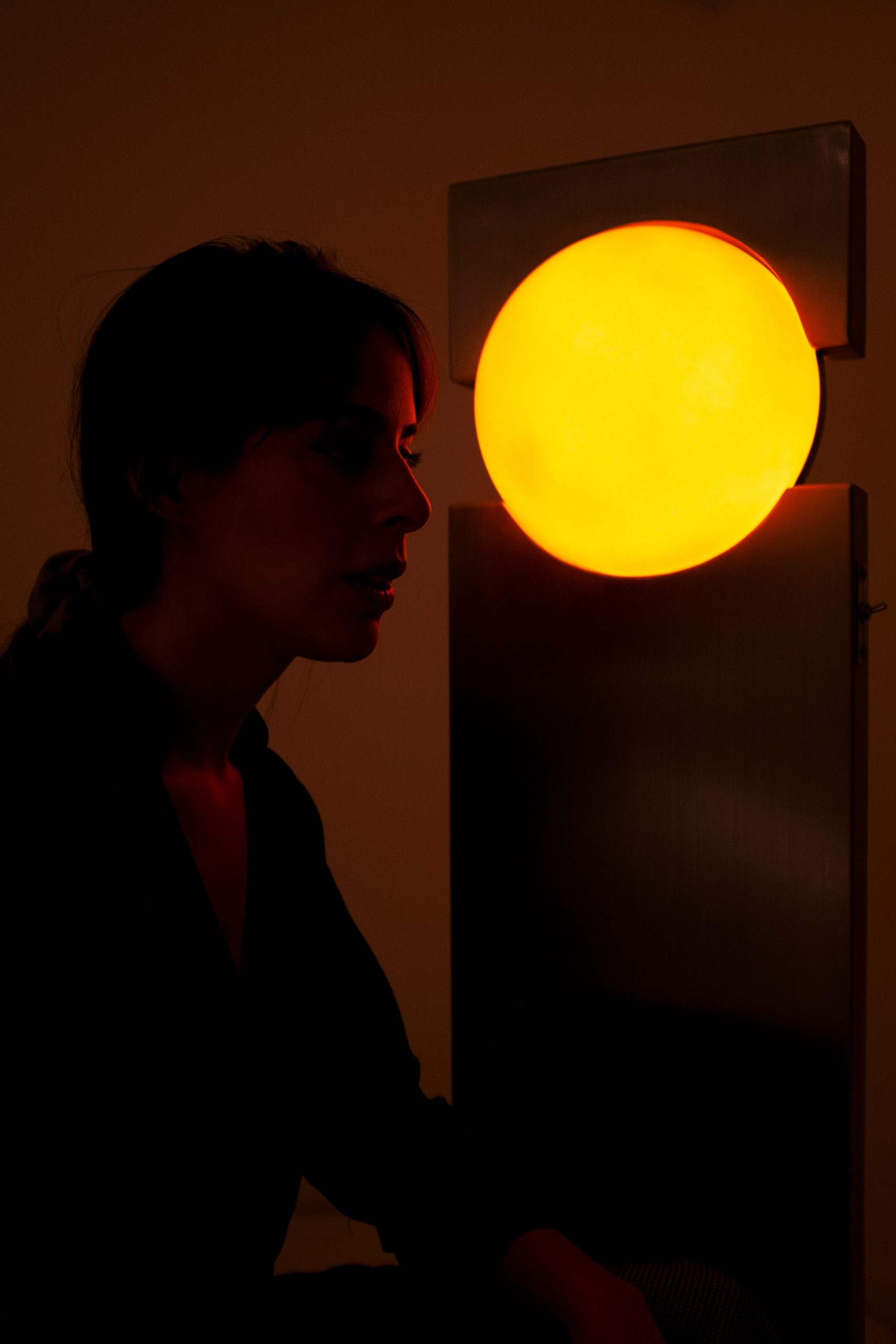
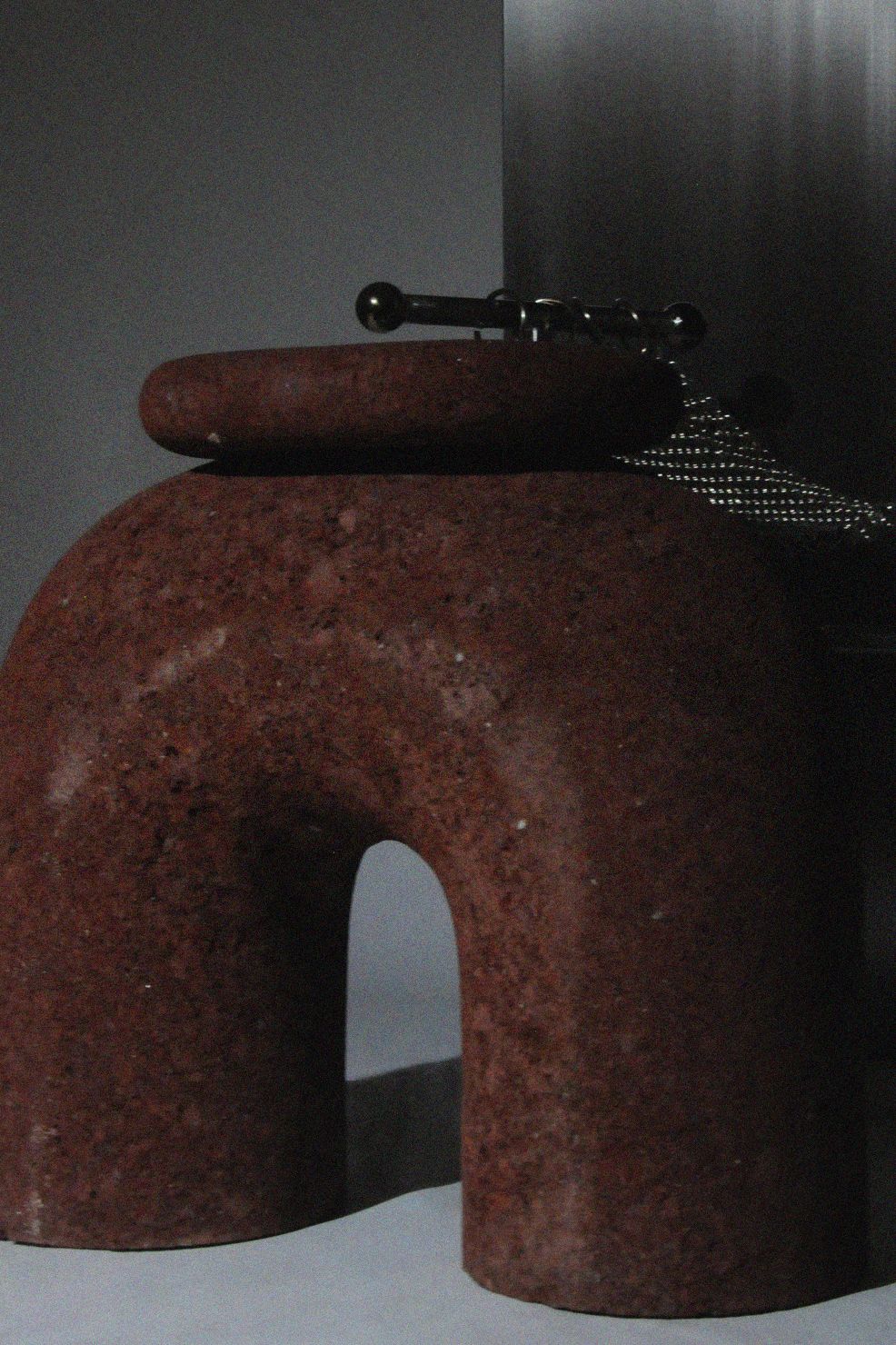
MATERIA: What is the inspiration behind this first collection?
MP: PANORAMMMA’s inspiration centers around exploring past visions of the future and creating myths of memory. Constructing on our past experiences through new visual narratives. For me, this means remitting to my direct experience living through the spaces of malady, which I see as affecting the psychological sphere of society, epitomized by the increasing loss of immediacy and spread of the aseptic perception of the “other”. The energy I intend for the designs to emit emulates a tension I identify in the devotion to material objects in México. Fetishism in México is deeply rooted in spirituality and religion. Regional syncretism makes objects of devotion an idiosyncratic phenomena.
MATERIA: And more specifically, what is the inspiration behind the Chainmail Chair?
MP: For the Chainmail Chair I sought to create a design that supported Felix Guattari’s concept of “a body without organs”, a body that is open to different forms of expression—to pain, to pleasure, to pleasure in pain, a body concentrated on its primal instincts. With the Chainmail Chair I ultimately seek to express and question our wish for constraint.
MATERIA: You collaborated with an artisan here in México to hand-make the chainmail correct? How was that process?
MP: I collaborated with an incredible jewelry artist in México City. Sourcing someone who could work the material with as much virtuosity as was needed and who had the disposition to take on such a time consuming task as each ring in the Chainmail Chair is linked by hand. I was lucky enough to finally encounter an artisan who specialized in medieval jewelry and who was as excited about this design as I was. He understood what I was going for from the very beginning of our collaboration, performing with truly incomparable craftsmanship and attention to detail. What proved to be more challenging was making alterations to the chainmail’s pattern that would provide greater comfort and support for the user.

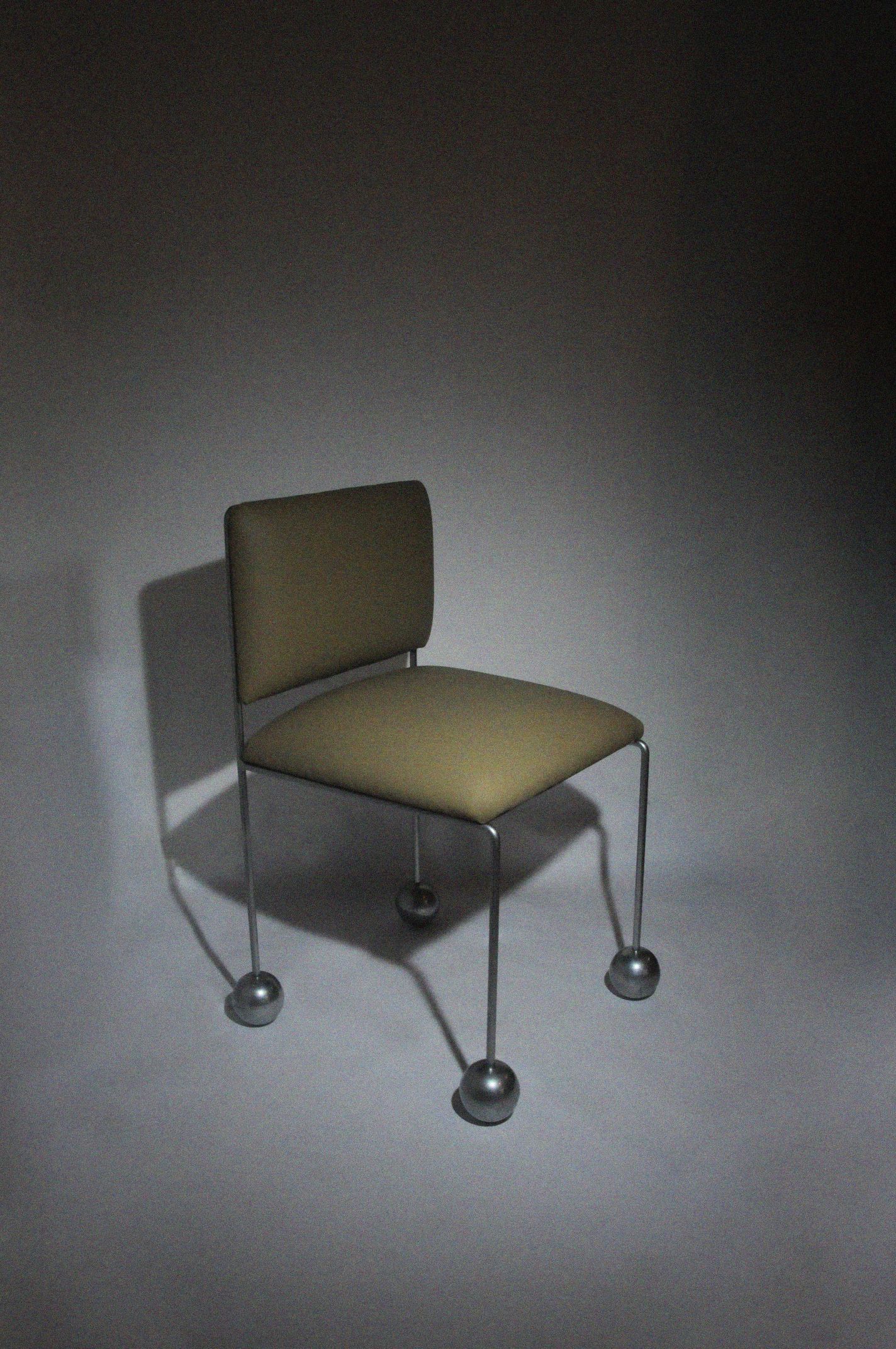
MATERIA: I find chainmail such an intriguing material. It’s intended as armor to provide protection. What about it do you find compelling and in the use of furniture how do you feel it finds new purpose and meaning?
MP: Chainmail is a fascinating material. It consists of a series of hand linked rings coming together to form a strong and flexible mesh that drapes like a textile. Simple in concept but extremely versatile and charged with meaning. The result of an old craft that somehow looks industrial and modern. Chainmail embodies grandeur and victory, but also violence. Initially used for armor but today its use and meaning extends to jewelry, perforations, restraint, bondage and discipline. Presenting such a material in a throne-like manner demands addressing its taboo associations.
MATERIA: What other materials have you been excited about lately?
MP: Lately my production partner, Renee Espinosa and I have taken on the task of recuperating used chroming rods from chrome plating workshops. These rods are used for submerging items into baths. As they age, layers of chromium and nickel residue form resembling something you would expect to find at the bottom of the ocean or on an alien planet. Although it is an industrial process, the outcomes are very organic. Some very special pieces are coming soon.
MATERIA: Who are some of your muses or sources of inspiration?
MP: I admire Isamu Noguchi’s work, presented as ambiguous in relation to time. This position exhibits traction between the archaic past and the technological future, reminding us of our limited perspective of geological time. Byung Chul Han’s reflections on beauty and the sublime have been important in my practice and a reminder to take distance from trend aesthetics and understand how they have real effects on the collective unconscious.
Other muses include: Lilly Reich, Eva Hesse, Tobia Scarpa, Gae Aulenti.
“For the Chainmail Chair I sought to create a design that supported Felix Guattari’s concept of ‘a body without organs’, a body that is open to different forms of expression—to pain, to pleasure, to pleasure in pain, a body concentrated on its primal instincts. With the Chainmail Chair I ultimately seek to express and question our wish for constraint.”
-MAIKA PALAZUELOS
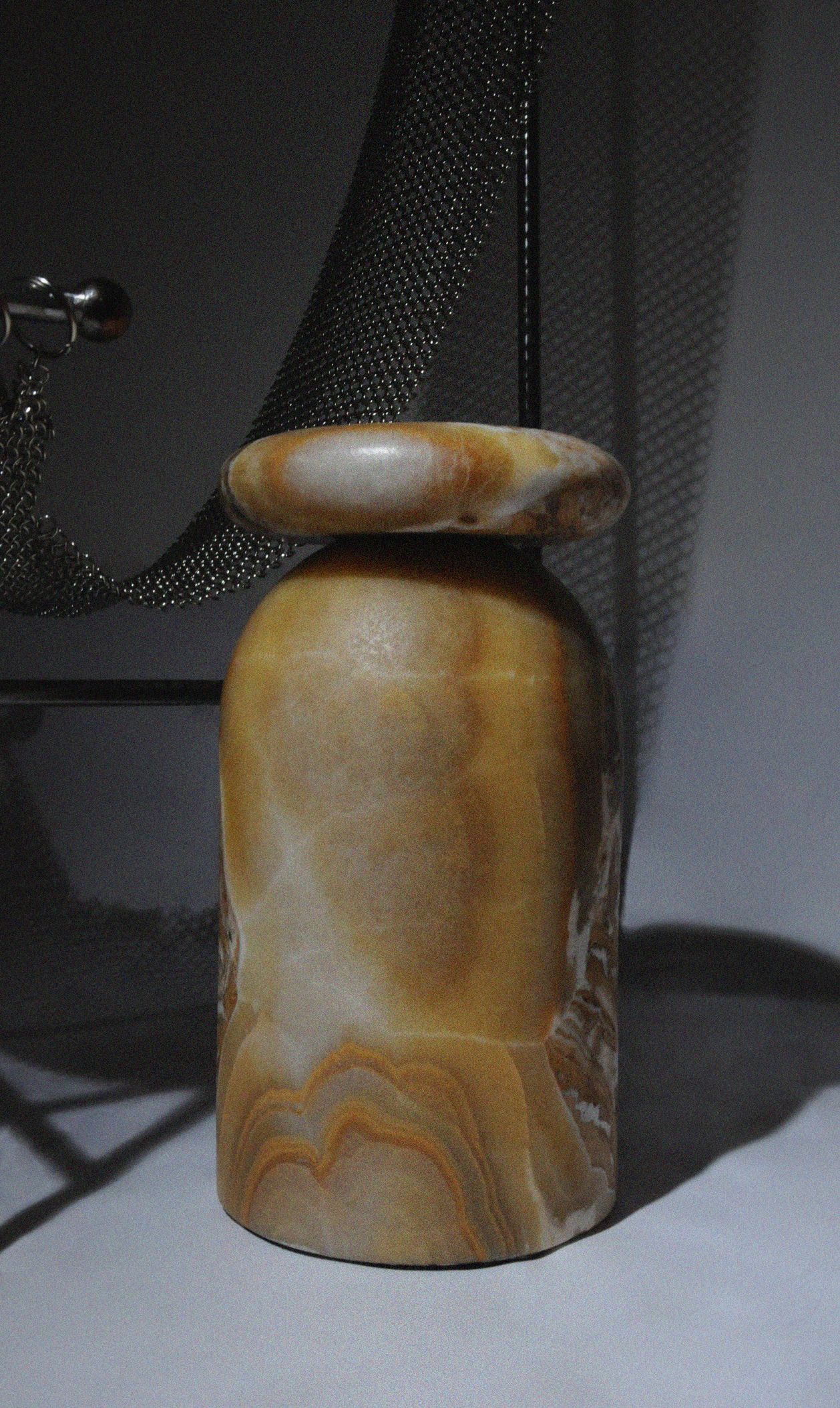
MATERIA: What is one of your favorite personal objects of design in your home and why?
MP: I have a set of white leather dining chairs from the 70s I bought at a flea market. These 3 legged chairs with rounded backrests transform into performatic props when placed one against another to form a perfect circle. Or when the surrounding floor is being cleaned and the objects are placed upside down atop the table, they resemble a sadistic ritual. I have unfortunately not been able to identify their designer.
MATERIA: Are you comfortable sharing more about your personal experience confronting disease, spending time in the hospital and how that influenced this collection?
MP: A couple of years ago I underwent chemotherapy treatment whose enduring side effects continue today as a general mental fog. I consider many of my designs in a way as a yearning to materialize and decipher my experience as a patient, a memory which I confront through a confused lens. During this time I was immersed in the aseptic materials of the clinic, remitting to them now as a tool to guide a reflection on notions of subjectivity and contextualize its discourse.
MATERIA: What did you observe most about the hospital environment that shows up in your designs?
MP: I found myself surrounded by spaces that were prosaic and sterile by design. They gave no clues to their geographic location or specific function. Rooms of emptiness, where drywalls and fluorescent lights blind notions of purpose. A climate that remained peculiarly pleasant, industrial tapestries, artificial plants, generic signage and oyster colored walls, all managed to equalize different activities. I don’t seek for my designs to necessarily imitate nor illustrate the concept of “clinic” but to emulate its disorienting effect.
MATERIA: What did you learn about immersion and focus in the design process from that experience?
MP: I learned that discourse can obtain validity through discrete methods of presentations. Formality can in many cases come off as equal to truth and certainty. Recognizing this, I hope an inverse exercise can be undertaken, calling into question the imperative about certainty and introducing fantasy as a plausible reality.
MATERIA: What advice can you offer other designers looking to launch their own collection?
MP: Sometimes it is exciting to plan a collection, but one could plan forever. I would advise to get started right away with prototypes. There are a lot of things you can only know by testing them out. Getting involved with the production of a work for me has frequently resulted in it fueling the idea for another, leading the way for a very natural, cyclical pattern of conception and creation.
MATERIA: What are some of the unexpected lessons learned this year?
MP: When wishing to experiment with materials and forms a huge challenge is always communication. It can be difficult to express a type of finish I am searching for to a collaborating workshop for example, when I can’t find any exact reference for it. It can be a long process of trying out different solutions, but there is always something to learn along the way.
MATERIA: In this young atelier’s first year what do you hope to accomplish?
MP: We are looking forward to closing the year with a couple of exhibitions and continuing with the development of new designs in preparation for fairs next year. Also look forward to a new challenge in juggling Panorammma’s production in and outside of México. I will be living in Spain with access to new and different materials, while my production partner Renee continues the development of pieces in México.
